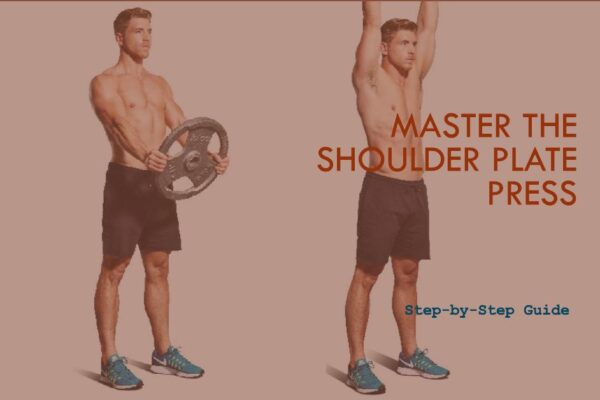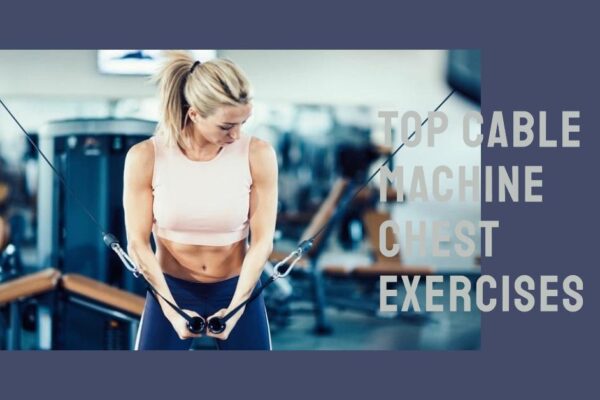Are you ready to take your arm definition to new heights? Look no further than the Seated Lateral Bicep Curl – a dynamic exercise that targets and transforms your biceps like never before. With its seated position and isolated movement, this exercise is designed to help you sculpt strong and shapely arms, giving you the confidence to rock those sleeveless outfits with pride
What is a Seated Lateral Bicep Curl?
The Seated Lateral Bicep Curl is an exercise that primarily targets the biceps brachii muscles, located in the front of the upper arms. This exercise is performed in a seated position, typically on a bench or chair, with dumbbells in hand.
Anatomy and Muscles Worked
Muscles Targeted by the Lateral Bicep Curl
- Primary: Biceps brachii – The primary muscle targeted by the Seated Lateral Bicep Curl, located in the front of the upper arm, responsible for elbow flexion and forearm supination.
- Secondary: Brachialis, Brachioradialis, Deltoids (Anterior) Secondary muscles engaged during the exercise, providing support and assistance in elbow flexion and overall movement coordination.

Proper Technique for Seated Lateral Bicep Curls
A. Set-Up and Equipment Needed
To perform the Seated Lateral Bicep Curl, you’ll need the following equipment:
- A sturdy and comfortable seat or bench
- Dumbbells or resistance bands of appropriate weight
- Optional: mirror for form check
B. Step-by-Step Guide
Here’s a detailed breakdown of how to execute the exercise correctly:
- Initial Position
- Sit upright on the seat or bench with your feet flat on the floor.
- Hold a dumbbell in each hand with a neutral grip (palms facing inward) or a grip that feels comfortable.
- Allow your arms to hang down by your sides, fully extended, and keep your shoulders relaxed.
2. Execution of the Exercise:
- Engage your core muscles to maintain stable posture throughout the exercise.
- Keep your elbows close to your sides as you slowly lift the dumbbells towards your shoulders, while exhaling.
- As you lift, focus on contracting your biceps and squeezing them at the top of the movement for a second or two.
- Ensure that your forearms remain vertical throughout the curling motion.
- Avoid any swinging or using momentum to lift the weights. Maintain control and perform the movement deliberately.
- Slowly lower the dumbbells back to the starting position while inhaling, maintaining control and tension in your biceps.
Breathing Tips
- Exhale during the concentric phase (lifting the weights) as this helps engage your core and stabilize your body.
- Inhale during the eccentric phase (lowering the weights) to maintain oxygen supply and control the movement.
Remember to start with lighter weights and gradually increase as you build strength and confidence in the exercise. Proper form and control are crucial for maximizing the benefits and minimizing the risk of injury.
Seated Lateral Bicep Curl Benefits
The Seated Lateral Bicep Curl offers several benefits for individuals looking to strengthen and tone their arms. Here are some of the key benefits:
- Bicep Muscle Development: The primary focus of this exercise is on the biceps brachii, which helps to build strength and size in the front of the upper arm. Regularly performing seated lateral bicep curls can lead to increased muscle mass and definition in the biceps.
- Arm Symmetry: By targeting the biceps specifically, the exercise helps to improve arm symmetry. Balanced development of both biceps can enhance overall aesthetics and create a more proportionate appearance.
- Overall Arm Strength: In addition to the biceps, the exercise also engages secondary muscles such as the brachialis and brachioradialis. This leads to overall arm strength development and improved functional abilities for activities that involve pulling or lifting.
- Joint Stability: Seated lateral bicep curls require stability in the shoulder and elbow joints. Through regular performance, these joints become stronger and more stable, reducing the risk of injury during other exercises or daily activities.
- Improved Grip Strength: Holding and controlling the dumbbells during the exercise can help to enhance grip strength. This can have practical benefits in various sports and activities that require a strong grip, such as weightlifting, rock climbing, or even everyday tasks like carrying heavy objects.
- Versatility and Convenience: Seated lateral bicep curls can be performed with dumbbells or resistance bands, offering flexibility in terms of equipment choice and location. They can be easily incorporated into a workout routine at home or in the gym.
Remember to consult with a fitness professional or trainer to ensure proper form and technique. Gradually increase the intensity and resistance as your strength improves to continue challenging your muscles and maximizing the benefits of the exercise.
Variations of Seated Lateral Bicep Curl
1. Alternating Seated Lateral Bicep Curls
Alternating Seated Lateral Bicep Curls is a variation of the traditional seated bicep curl exercise that involves curling one arm at a time while keeping the other arm extended. This exercise helps to target and isolate each bicep individually, promoting balanced development and strength. It also increases stability and control as you alternate between arms.
Technique and Execution:
- Hold a dumbbell in each hand with a neutral grip (palms facing inward).
- Start by curling one arm towards your shoulder while keeping the other arm extended.
- Lower the curled arm back down as you simultaneously curl the other arm.
- Alternate the curling motion between arms, focusing on maintaining control and proper form throughout the exercise.
2. Seated Lateral Bicep Curl with Twist:
Seated Lateral Bicep Curl with Twist is a variation of the seated bicep curl exercise that incorporates a twisting motion at the top of the movement. It helps to develop forearm and grip strength while targeting the biceps from a different angle.
Proper Form and Execution:
- Hold a dumbbell in each hand with a neutral grip (palms facing inward).
- As you curl the weights towards your shoulders, rotate your wrists outward so that your palms face away from your body at the top of the movement.
- Slowly twist your wrists back to the starting position as you lower the dumbbells back down.
- This variation adds a rotational element, engaging the forearms and brachioradialis muscles.
3. Seated Incline Lateral Bicep Curls
Seated Incline Lateral Bicep Curls is a variation of the bicep curl exercise performed on an inclined bench. By adjusting the bench to a 45-degree angle, this exercise changes the angle of the movement, providing a different stimulus to the biceps. This variation helps to target the biceps from a different angle and uniquely challenges the muscles. It also engages the stabilizer muscles in the arms and shoulders to maintain proper form during the exercise.
How to Perform
- Adjust an incline bench to a 45-degree angle.
- Sit on the bench with your back against the incline, holding a dumbbell in each hand with a neutral grip.
- Allow your arms to hang down by your sides, fully extended, and keep your shoulders relaxed.
- Curl the dumbbells towards your shoulders while maintaining the incline position.
- Lower the weights back down in a controlled manner, maintaining tension in the biceps throughout the exercise.
- Performing the exercise on an incline bench changes the angle of the movement, providing a different stimulus to the biceps.
Remember to choose appropriate weights for each variation and focus on maintaining proper form throughout the exercises. Gradually increase the intensity and resistance as your strength improves.
Also read: Unlock the Secrets of Seated Alternating Dumbbell Curls
Tips to Maximize Results and Safety
To get the most out of your Seated Lateral Bicep Curl while ensuring safety, consider these tips:
A. Warm-up and Stretching: Prioritize a warm-up and incorporate wrist and forearm stretches to prepare your muscles.
B. Progressive Overload: Gradually increase weight or repetitions to challenge your muscles and promote growth.
C. Proper Recovery: Allow ample rest and recovery time to avoid overuse injuries and promote muscle repair.
D. Listen to Your Body: Pay attention to any discomfort or fatigue and adjust your technique or weight accordingly.
E. Seek Professional Guidance: Consider working with a qualified fitness professional for personalized guidance.
By following these tips, you can optimize your results and maintain a safe workout routine.
Common Mistakes to Avoid
When performing the Seated Lateral Bicep Curl, there are a few common mistakes that you should avoid:
- Using too much momentum: Avoid swinging or using excessive momentum to lift the dumbbells. Focus on controlled movements and engage your biceps throughout the entire range of motion.
- Incorrect posture: Ensure that you maintain proper posture throughout the exercise. Sit upright with your back against the seat and avoid leaning forward or slouching. This helps to target the biceps effectively and prevent strain on other muscles.
- Gripping the dumbbells too tightly: While it’s important to have a firm grip on the dumbbells, avoid gripping them too tightly. This can cause unnecessary tension in your forearms and wrists. Maintain a comfortable grip to allow for smooth and controlled movements.
- Neglecting full range of motion: Make sure to fully extend your arms at the bottom of the movement and curl the dumbbells up towards your shoulders. Avoid partial reps or stopping short of the full range of motion, as this limits the effectiveness of the exercise.
- Overloading with heavy weights: Start with lighter weights and gradually increase the resistance as you build strength and proper form. Using excessively heavy weights can compromise your technique and increase the risk of injury.
Remember to consult with a fitness professional before attempting any new exercises and always listen to your body to avoid any discomfort or pain.
Frequent Question Answers
By addressing the following frequently asked questions, we hope to provide clarity and guidance on incorporating the Seated Lateral Bicep Curl into your fitness routine. Remember to listen to your body, start at an appropriate level, and gradually progress for optimal results.
| FAQ | Answer |
|---|---|
| How many sets and reps should I do for seated Lateral bicep curls? | Aim for 3-4 sets of 8-12 reps. |
| Can I use a resistance band instead of dumbbells for seated Lateral bicep curls? | Yes, you can use a resistance band. Anchor it securely and grasp the handles. |
| Should I fully extend my arms at the bottom of the seated Lateral bicep curl? | Maintain a slight bend in your elbows at the bottom. |
| How often should I include seated bicep curls in my workout routine? | Include them 2-3 times per week with at least one day of rest in between. |
| Can seated Lateral bicep curls help increase arm size? | Yes, when combined with a proper strength training program and nutrition. |
| What are common mistakes to avoid during seated bicep curls? | Avoid using momentum, swinging weights, lifting excessively heavy weights, and arching or leaning forward. |
| Is it necessary to warm up before performing seated bicep curls? | Yes, warm up with light cardio or dynamic stretches. |
| Can seated Lateral bicep curls help with overall arm strength? | Yes, they contribute to improved arm strength and functional fitness. |
| Should I hold my breath while performing seated bicep curls? | No, breathe naturally throughout the exercise. |
| Can seated Lateral bicep curls be performed with a barbell instead of dumbbells? | Yes, sit on a bench with back support and hold the barbell with an underhand grip. |
Conclusion
Seated lateral bicep curls are an effective exercise for targeting the biceps brachii, brachialis, and brachioradialis muscles. By incorporating this exercise into your workout routine with proper form and control, you can increase arm strength and achieve desired muscle growth.
Remember, consistency is key! Aim for 3-4 sets of 8-12 reps, 2-3 times per week, with rest days in between to allow for muscle recovery. Whether you’re using dumbbells or resistance bands, focus on maintaining proper arm position and avoiding common mistakes like swinging the weights or arching your back.
Challenge yourself by gradually increasing the weight and pushing your limits, but always listen to your body and avoid lifting excessively heavy weights that compromise your form. And don’t forget to warm up before each session to prevent injuries and optimize your performance.
Stay motivated and committed to your fitness journey. With dedication, perseverance, and a well-rounded workout routine, you will see progress and achieve your goals. Keep pushing forward and remember that every small step counts towards a stronger, healthier you.
Sources
- The Lateral Bicep Curl: The Complete How-To Guide
- Lateral Dumbbell Curls from Matt Knight Official.
- How to Do Biceps Curls: Proper Form, Variations… from Verywell Fit.
- How to Do the Perfect Bicep Curl & Build Bigger… from Men’s Health.






Leave a Reply